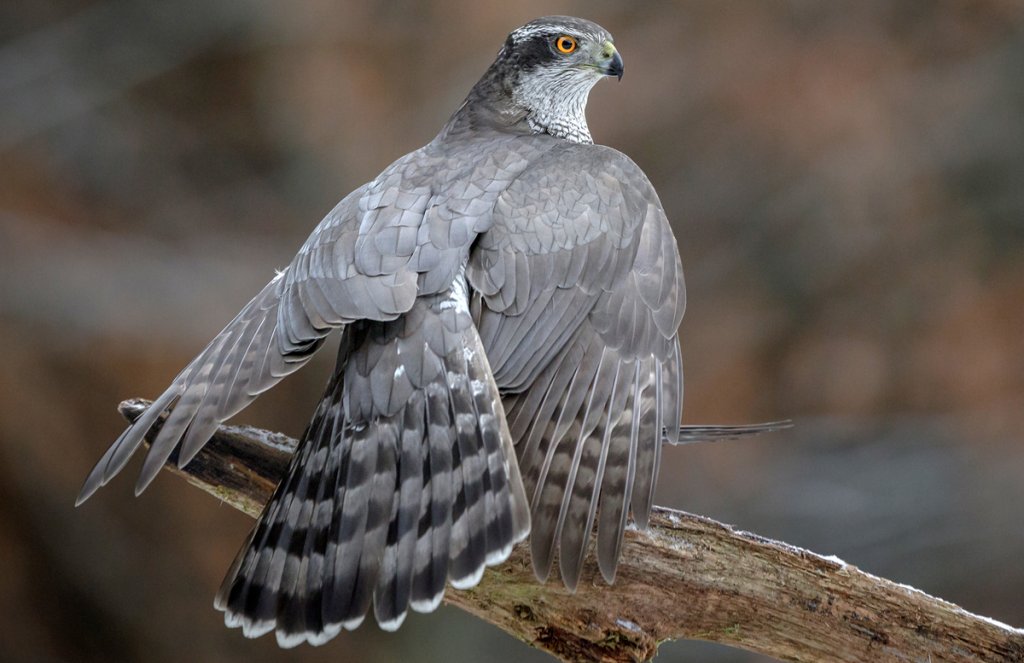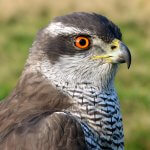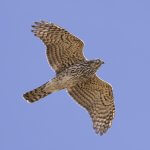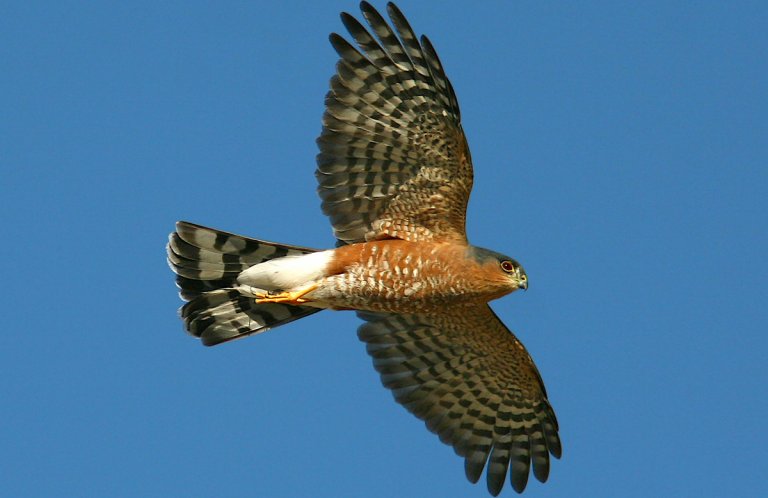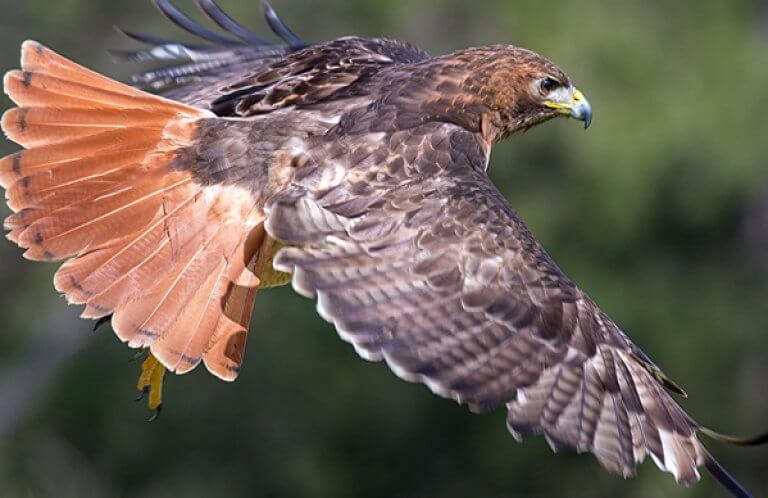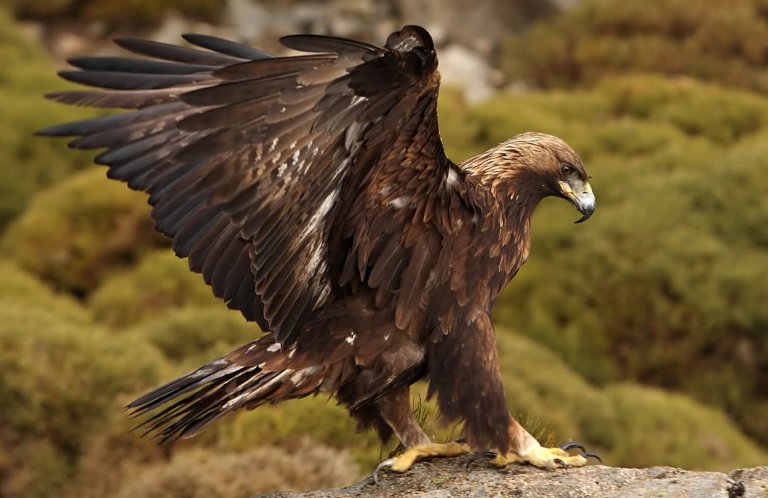About
The formidable American Goshawk is the largest of North America's “forest hawks,” a subset of raptors which includes the closely-related, but smaller, Cooper's and Sharp-shinned Hawks. It was split from the Northern Goshawk in 2024, along with its Eastern Hemisphere counterpart, the Eurasian Goshawk. Long-tailed with short, broad wings, this hawk is built for agile maneuvering while flying through dense undergrowth. As with other birds of prey, the female American Goshawk is larger than the male. An adult female “Gos” is almost as large and heavy as a Red-tailed Hawk!
In adult plumage an American Goshawk is unmistakable; blue-gray above and whitish-gray with faint, fine black barring below. It has fluffy white undertail coverts and a long, banded, dark grey tail. Its head has a dark grey to black cap with a contrasting white eyebrow, set off by blazing orange to red eyes. Juveniles are more of an identification challenge: brown above and whitish with dark streaking below; they are often confused with juvenile Cooper's Hawks. An immature goshawk has yellow eyes, which slowly darken to red as the bird ages.
This striking raptor has captured humans' imaginations throughout the ages.
The Cook's Hawk
Much like the Golden Eagle, the goshawk is revered across the world as a symbol of strength and power. Its hunting prowess made it a sought-after falconry bird throughout Europe and Asia. Japanese shoguns carried goshawks on their fists as status symbols, and the image of a goshawk once adorned the helmet of the mighty Attila the Hun!
The goshawk was once known as “the cook's hawk,” in Europe, since it feeds on much of the same wild game that people prefer — grouse, ducks, rabbits, and hares – and was considered a valuable hunting partner. Unfortunately, many gamekeepers also saw goshawks as competition, which led to relentless (and illegal) persecution.
Songs and Sounds
The American Goshawk is vocal during its breeding season, giving a loud, screaming kak-kak-kak call during nest defense, communication with its mate, and even sometimes while in pursuit of prey. Mated pairs stay in contact through calling, as visibility is usually limited within their forest territory. Fledgling goshawks make a persistent version of this call when begging for food.
Listen here:
Breeding and Feeding
Fearless Nest Defender
American Goshawk pairs are monogamous, but only come together during the breeding season. Nesting activity begins early, with the female beginning to build or repair her nest between February-April. She carefully gathers sticks from the forest floor or breaks them off from trees to build the large nest, lining the interior with tree bark and greenery. The male may help with nest building.
A pair of goshawks will maintain up to eight alternate nests within their territory. Although they may reuse the same nest over successive years, the pair often selects an alternate nest each year. This “nest switching” may reduce exposure of their young to disease or harmful parasites.
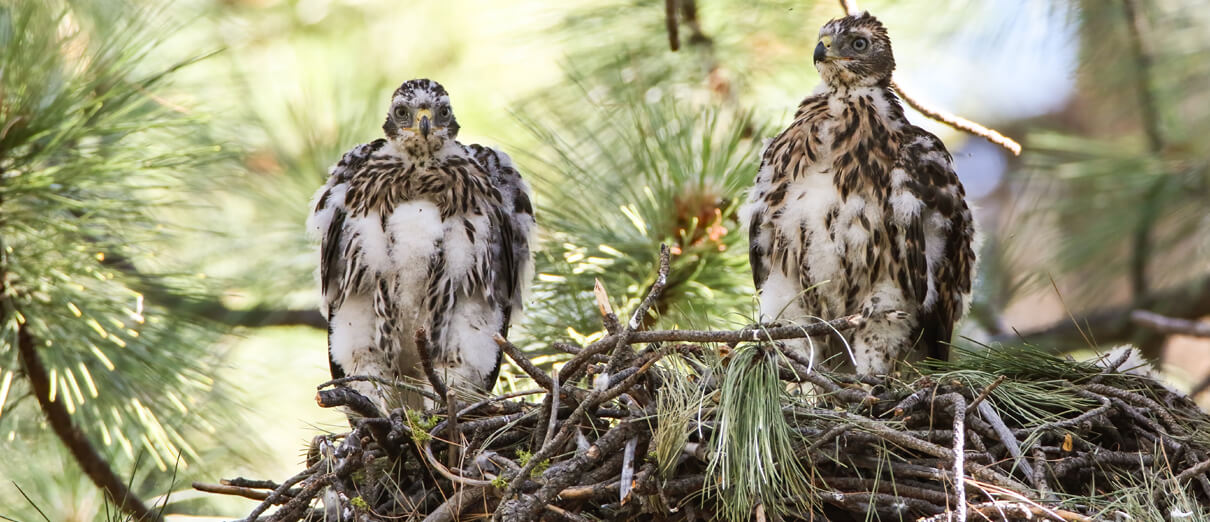
Peak nesting activity occurs from April through June, when the female lays her clutch of 2-4 eggs. The female does most of the incubating, with the male occasionally taking a shift. The young hatch after approximately a month and a half, and the female tends them closely, with the male supplying food. The chicks fledge after another month, but remain close the nest, depending on their parents for food, for several months afterwards.
The American Goshawk is extremely aggressive near its nest, defending its young and territory against any perceived threat (including humans) by dive-bombing and striking intruders — often to the point of drawing blood.
Powerful Predator
The word goshawk derives from the Old English for “goose hawk,” a nickname that gives a good idea of this formidable raptor's hunting prowess. Unlike its close relatives, it hunts mammals as frequently as birds, capturing squirrels, rabbits, and hares as well as grouse, pigeons, woodpeckers, corvids, and waterfowl. Goshawks prefer to hunt inside the forest or along its edge, capturing prey through a sudden surprise attack. This big hawk is relentless in pursuit on the wing or on foot, even following prey into the water on occasion.
Region and Range
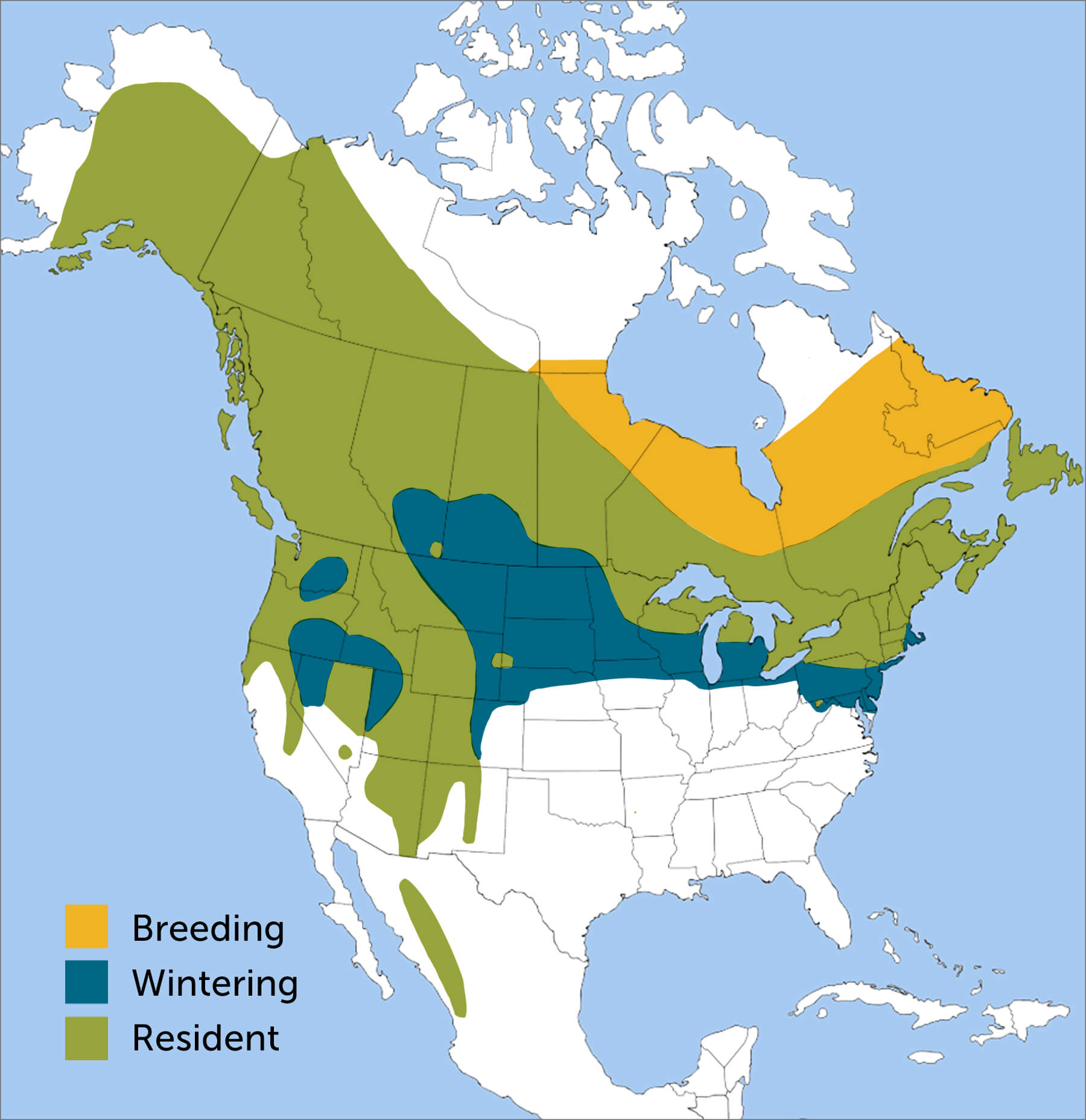
The American Goshawk breeds from Alaska to Newfoundland and south to Mexico. It's a partial migrant, with birds from colder regions moving south for the winter. More southerly populations are resident in the same area all year. Some American Goshawks are altitudinal migrants, moving to lower areas each winter in search of food.
Like the Snowy Owl, unusual numbers of American Goshawks may show up out of their normal range every 10 years or so; these irregular movement patterns, called irruptions, coincide with population crashes of their prey, particularly Snowshoe Hare and Ruffed Grouse.
Three subspecies of American Goshawk are currently recognized, based on differences in size, color, and plumage pattern.
Conservation
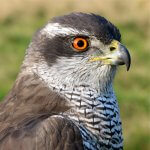
Help support ABC's conservation mission!
The American Goshawk is considered a "management indicator" in many national forests, since the species is quite sensitive to habitat loss and mismanagement, particularly during its nesting season. Goshawk pairs will abandon their territory and nests due to logging and other human activities, even those as low-impact as camping.
Thoughtful forestry practices can help avoid this nest abandonment and even improve American Goshawk nesting habitat. This more mindful approach can work in a variety of circumstances for other species, as seen in ABC's work in the Northwoods region around the Great Lakes, which benefits Golden-winged and Kirtland's Warblers, Wood Thrush, American Woodcock, and many other local birds.
Get Involved
Policies enacted by the U.S. Congress and federal agencies, such as the U.S. Fish and Wildlife Service, have a huge impact on U.S. birds. You can help shape these rules for the better by telling lawmakers to prioritize birds, bird habitat, and bird-friendly measures. To get started, visit ABC's Action Center.
Living a bird-friendly life can have an immediate impact on the birds around you. Doing so can be as easy as adding native plants to your garden, avoiding pesticides, and keeping cats indoors. To learn more, visit our Bird-Friendly Life page.
American Bird Conservancy and our Migratory Bird Joint Venture partners have improved conservation management on more than 8.5 million acres of U.S. bird habitat — an area larger than the state of Maryland — over the last ten years. This is a monumental undertaking, requiring the support of many, and you can help by making a gift today.





































